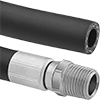Filter by
Conduit Connection
Connects To
Material
Length
For Conduit Flexibility
T-Slotted Framing Component
Electrical Connection Component
Export Control Classification Number (ECCN)
DFARS Specialty Metals
Electrical
Building and Machinery Hardware
Fluid Handling
















































